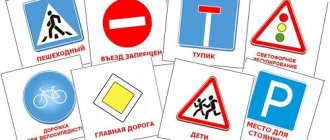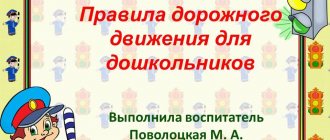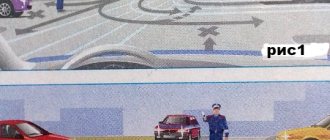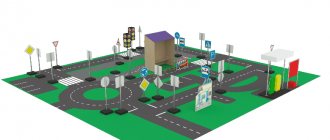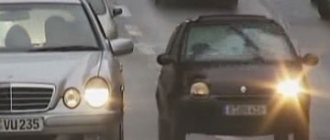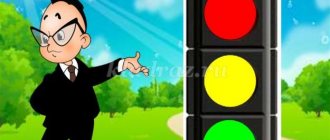Game description
Children line up in a column along one side of the playground or along the wall of the room. The first one standing in the column is a “locomotive”, the rest are “cars”.
The teacher blows the horn and the children begin to move forward (without clutch); at first slowly, then faster and start running (when moving slowly, children can pronounce the sounds “chu-chu-chu”).
“The train is approaching the station,” says the teacher. Children gradually slow down and stop.
The teacher blows the whistle again, and the train moves again. The total duration of the game is 4-5 minutes.
No. 4. “SPARROWS AND THE CAR”
Target:
Exercise children in running in different directions, without bumping into each other, in the ability to start a movement and change it at the teacher’s signal, to find their place
Game description
When the image of a sparrow is raised, the “Sparrows” begin to move; when the image of a car is raised, the “Cars” begin to move. Children run around the playground, trying not to disturb each other. The team that doesn't make a single mistake wins.
Rules:
The game begins at the teacher's signal.
When the image of a sparrow is raised, the sparrow children move.
When the image of a car is raised, children-cars move.
Topic: “Land of Road Signs”
Pisareva Tatyana Anatolyevna Krasnoyarsk MBDOU No. 60
Goal: developing skills for safe behavior on the roads. Program content: • Consolidate children's knowledge about traffic signals; • Continue to reinforce rules of conduct on the roadway; • Develop in children a sense of responsibility in observing traffic rules; • Reinforce the idea that signs are divided into several groups (warning, informing, prohibiting); • Practice orientation in the environment. Activation of the dictionary: • Consolidate the words in children’s speech: pedestrian, passenger, sidewalk; • Fix the names of road signs in speech. Integrative tasks: “Security”:
- expand and consolidate children’s knowledge about traffic lights and traffic rules;
- continue to familiarize children with road signs;
- Encourage children to take initiative in order to gain new knowledge. "Communication":
- enrich children's vocabulary with the names of road signs and transport. "Socialization":
- develop children's play activities;
- introduce basic generally accepted norms and rules to relationships with peers. “Reading fiction”:
- expand children's vocabulary with poems and riddles;
- improve performance skills when reading poems. "Artistic creativity":
- improve the skill of using scissors when cutting out circles;
- cultivate independence, develop the ability to actively and creatively apply previously learned application methods. Forms of delivery: integrated lesson. Techniques: surprise moment - Traffic light, Malvina. Methods: verbal, visual, practical. Progress of the lesson:
- Organizational moment Educator: Guys, look how many guests came to us today, let's say hello to them.
- What's your mood? Children: - Good! Educator: Let's give this good mood to the guests. Children blow on their palms. Warm-up is carried out (poems by S. Mikhalkov). I'm rolling on two wheels, (They walk in a circle, one after another.) I'm spinning two pedals, (They're walking, raising their knees high.) I'm holding on to the steering wheel, looking forward, (They're holding an imaginary steering wheel with their hands.) I know: a turn is coming. (They turn and go the other way.) When finished, they sit on chairs.
- Main part Educator: Guys, today we will go to the country of Road Signs. Look carefully at the picture. What do you see on it? (Children's answers.) Educator: Yes, there are a lot of cars on the streets: they take adults to work, children to kindergarten, and deliver groceries to stores. In this picture you see the safe movement of cars and pedestrians.
- Do you think it’s possible to walk everywhere? (Children's answers) Educator: “Around the city, along the street, They don’t just walk around. When you don't know the rules, it's easy to get into trouble. Be careful all the time, And remember in advance: The driver and the pedestrian have their own rules!!!” Malvina appears. Malvina: For the safety of traffic and pedestrians, special rules have been created that must be known and followed. Malvina: Guys, in order not to get confused on the street and not get into trouble, road signs will come to our aid. There are many different signs - You need to know these signs so that you never break the rules on the road.
The red circle indicates a Mandatory Ban. It reads: “You can’t drive like that” or “There is no road here.”
And there are also signs - Taken in a blue square. How and where you can drive, These signs tell you.
Remember, adults and children, this sign will always warn. If you see a red triangle, it means that something is waiting for us ahead.
The blue rectangle will help you where to find a stop and gas station - everything you need on the way. Didactic game “Assemble a road sign.” (Children tell what sign they collected)
- There are many different road signs on the street. They talk about what the road is like, how to drive, what is allowed and what is not allowed. Each sign has its own name and is installed in the place where it is needed. Let's get to know them:
- Here is an ordinary crossing People are walking along it. Here the special marking “Zebra” is aptly called! White stripes here lead across the street. Educator: Why do you think the stripes on a zebra are white? Children: White stripes so that they are clearly visible even at night.
- See that sign hanging over there? This sign tells us not to get into trouble! You need to cross here, There is an underground passage, Here is an overground passage - It will take you Under the ground, above the ground - it’s clear It’s safe for people to walk.
- The younger brother looks straight at him: “Pedestrian, look, wait!” Only the green man allows the way home, Pedestrian traffic light.
- No pedestrians walk here in rain or shine. The sign tells them one thing: “You are prohibited from walking!”
- There are children in the middle of the road, We are always responsible for them. So that their parent does not cry, Be careful, driver!
- At this point the pedestrian waits patiently for transport. He's tired of walking, he wants to become a passenger. Physical education lesson: The road is not a path, the road is not a ditch, First look left, then look right. Turn to the left and smile at the friend next to you. Stomp your right foot: 1, 2.3, Shake your head: 1, 2.3, Raise your hands up and clap: 1, 2, 3. Educator: Pedestrians and drivers have one more assistant. Guess which one. Three eyes blink, Three eyes blink, They help us cross the street. (Traffic light.) (Traffic light comes out) Traffic light: That's right, guys, this is a traffic light. Guys, why do you think we need a traffic light? What eyes are they talking about in the riddle? (children's answers) Children: The traffic light regulates traffic on the city streets so that there is order on the streets.
- What do traffic lights mean? (children's answers)
- Red?
- What about yellow? (children's answers)
- What about green? (children's answers)
- Well done guys, you know about traffic lights. Now we are going to play a game. The outdoor game “Traffic Signals” is played.
- Practical part (making a traffic light) Explanation of techniques and sequence of work. The teacher distributes blank traffic lights. Educator: Guys, look, what’s missing here? Children: Ogonkov. Educator: And they will light up when you cut out beautiful circles from these squares and paste them in a certain sequence. Which circle will you stick on top? Children: Red. Educator: In the middle? Children: Yellow. Educator: And below, there will be... Children: Green. Educator: In order for your fingers to work better, you need to stretch them. Finger gymnastics: One, two, three, four, five. (Unclench your fingers from your fist one at a time, starting with the thumb.) The fingers went out for a walk. (Rhythmically unclench and squeeze all fingers together.) One, two, three, four, five. (We clench one by one, widely spaced fingers into a fist, starting with the little finger.) They hid in the house again. (We rhythmically squeeze all our fingers together.) Educator: I remind you, friends, that you cannot play around with scissors. Traffic light: Well done! Everyone completed the task. Thank you guys for making the traffic lights, thanks to you I now have more helpers on the roads. Well, I have to go, goodbye.
- Result Educator: Today we took a trip through the country of Road Signs. Did you enjoy our trip? (Children's answers) A "Road Game" is being held · When going out Prepare in advance Politeness and restraint, And most importantly - ...... Attention. · Bug-Eyed stood on patrol on the road...? Traffic light · Green light has opened the road: Guys...They can cross! · The red light tells us:
- Stop! Dangerous! The path...Closed! · Everyone be true to the rule: Stay... To the right side! · And the animals even know: They don’t... Play on the road! · The reckless driver will order “Stop!” On the road... Guard. · He will tell the driver everything and indicate the correct speed. By the road, like a beacon, Good friend - ... Road sign. · Where the steps lead down, go down, don’t be lazy. The pedestrian must know: Here...? Underground passage · If a pedestrian needs to cross the Mostovaya? The pedestrian is immediately looking for a road sign...? Transition. · When I approach the road, I hold my mother………….. by the hand. · Guess who's coming? Well, of course,…………… pedestrian! Well done boys! Educator: Our journey through the country of Road Signs has ended. Always follow the traffic rules, so that no trouble happens on the street!
Game description
Children are divided into 2 subgroups and placed perpendicular to each other. The first is steam locomotives, the second is cars. When the traffic light turns green, the “Locomotives” start moving and the “Cars” stop. At a red traffic light
The "Locomotives" stop and the "Cars" begin to move.
“Steam Locomotives” and “Cars” start moving when the traffic light turns green.
“Locomotives” and “Cars” stop at a red traffic light.
No. 6. “THE CHILDREN GO TO GARDEN”
Target:
Exercise children in running in a straight line at the teacher’s signal. Reinforce knowledge of traffic lights.
Game description
Children, at the teacher’s signal, follow each other without bumping into each other. Couples stop at a red traffic light. When it turns green, they continue driving.
Rules:
Couples start moving when the traffic light turns green.
Couples stop at a red traffic light.
Summary of an integrated lesson in the middle group. Traffic Laws
Summary of an integrated lesson for children of middle preschool age “Road rules - rules of life.”
Description of work: This material will be useful to kindergarten teachers of middle groups, this summary is developed for children of middle preschool age, the summary is used in safety classes. Author: Irina Vladimirovna Karpizenkova, teacher, Novokuznetsk MB Preschool Kindergarten No. 102
Summary of the integrated lesson “Road rules - rules of life.”
Goal: to develop a consciously correct attitude towards compliance with traffic rules as a pedestrian. Objectives: to consolidate children’s knowledge about traffic rules, to teach them to apply knowledge previously acquired in practical activities. Consolidate knowledge about the purpose of road signs and traffic lights; that people walk on the sidewalks, cross the road at crossings, when the traffic light signal permits. Continue to cultivate attentiveness and the ability to navigate when crossing the road. Integrative tasks: “Safety”: - expand and consolidate children’s knowledge about traffic lights, traffic rules; — continue to familiarize children with road signs; — encourage children’s desire to take initiative in order to gain new knowledge. — introduce the profession of people who monitor compliance with traffic rules. “Communication”: - enrich children’s vocabulary with the names of road signs and transport. “Socialization”: - develop children’s play activities; - introduce basic generally accepted norms and rules to relationships with peers. “Reading fiction”: - expand children’s vocabulary with poems and riddles; -improve performing skills when reading poems. “Artistic creativity”: - improve the ability to use scissors when cutting strips; - cultivate independence, develop the ability to actively and creatively apply previously learned application methods. Demonstration material: traffic police inspector doll, road signs, toy rod, multimedia installation. 1. Organizational moment The teacher and children gather in a circle: Hey! Guys, come over, look at each other, say hello with your palms, everyone smile a little. Warm-up is carried out (poems by S. Mikhalkov). I'm rolling on two wheels, (They walk in a circle, one after another.) I'm spinning two pedals, (They're walking, raising their knees high.) I'm holding on to the steering wheel, looking forward, (They're holding an imaginary steering wheel with their hands.) I know: a turn is coming. (They turn and go the other way.) When finished, they sit on chairs. Educator: What is your mood? Children: Good. 2. Main part I know that you love to play, and now I want to play a game with you. The game “Stand up, those who...” is being played. Children sit on chairs arranged in a circle, listen and carry out the teacher’s task: Stand up, those who like to play with cars? Stand up, those who come to kindergarten on foot? Stand up, those who come to kindergarten by bus? Stand up, those who are brought to kindergarten by car? Stand up, those whom your mother brought today? Stand up, those whom dad brought today? Stand up, those who come to kindergarten alone, without adults? Look, guys, now you are all sitting, this means that you all come to kindergarten together with adults, with mom or dad, with grandparents. Why do you think? (children's answers). That's right, you and I know that the street, the road, is a place where you need to be very careful so that trouble does not happen. Remember what the rules are called that people must follow if they are going to go out and go or go somewhere? (children's answers). That's right, these are the rules of the road. What do you and I know about traffic rules? In chorus: “In order to never get into difficult situations, you must know and follow the rules of the road!” Educator: Now we will check how well you know the rules of the road. To cross the road, you need to know the rules of the road. Who knows how to cross the road? Children: Children give individual answers. You should walk along the sidewalk as far as possible from the roadway; When crossing the road, you should stop at the roadway and look to the left, then to the right and again to the left; You can cross the road only when the traffic light is green; They cross the road in safe places - at a traffic light, at a zebra crossing; Educator: We repeated the basic rules of the road, guys, today I also want to introduce you to the profession of people who monitor compliance with traffic rules. Maybe some of you know? (children's answers). Let's see who it is (draws the children's attention to the screen of the multimedia equipment). Traffic police inspector. Now look carefully at the hands of the traffic police inspector. What is in his hands? Children: rod. Educator : That's right, rod. Guys, tell me, why does a traffic police officer need a baton? Children: in order to control the movement of cars and pedestrians on the roads. Educator: Well done, you answered correctly. Now let’s play the game “On the Road”: you are all cars and must move in the same direction, in a column. And I, the traffic police inspector, will show you the direction of the road with the help of a baton and words. The first car will be Dasha. The rest of the cars stand behind her. Let's look carefully at my rod. Assignment: “A column of cars drives straight, turns right (the inspector raises his right hand), turns right again (raises his right hand again), drives straight (points his hand straight), turns left (raises his left hand), drives straight (points his hand straight), turns left (turns back). Educator: everything was done correctly. You guys are great! Such difficult tasks, but you completed everything! This means you know the rules of the road well! Physical education lesson: The road is not a path, the road is not a ditch, First look left, then look right. Turn to the left and smile at the friend next to you. Stomp your right foot: 1, 2.3, Shake your head: 1, 2.3, Raise your hands up and clap: 1, 2, 3. Didactic game “Collect a road sign.” From the puzzle, children collect road signs and tell which sign they collected. 3. Practical part (making a wand). Explanation of techniques and sequence of work. Collective production of the wand. Educator: Well done! Everyone completed the task. Thank you guys for making the rod. As a souvenir, I want to give all of you badges - medals that certify your knowledge of the rules of the road. 4. Summary Today in class we reviewed the rules of the road, played games and got acquainted with the rod, and in order for you to remember it better, we made it for you.
We recommend watching:
Scenario of a sports festival in the preparatory group “Forward to the Olympics on a safe road!” Lesson notes on traffic rules. Middle group Literary and musical composition according to traffic rules for older preschoolers Entertainment according to traffic rules for older preschoolers
Similar articles:
Summary of an educational lesson for older preschoolers on traffic rules
Traffic rules in kindergarten. Middle group
Summary of a lesson on traffic rules in the middle group. City streets
Lesson on traffic rules for children in the middle group of kindergarten. Crossroads
Summary of a walk according to traffic rules in the middle group. City streets
